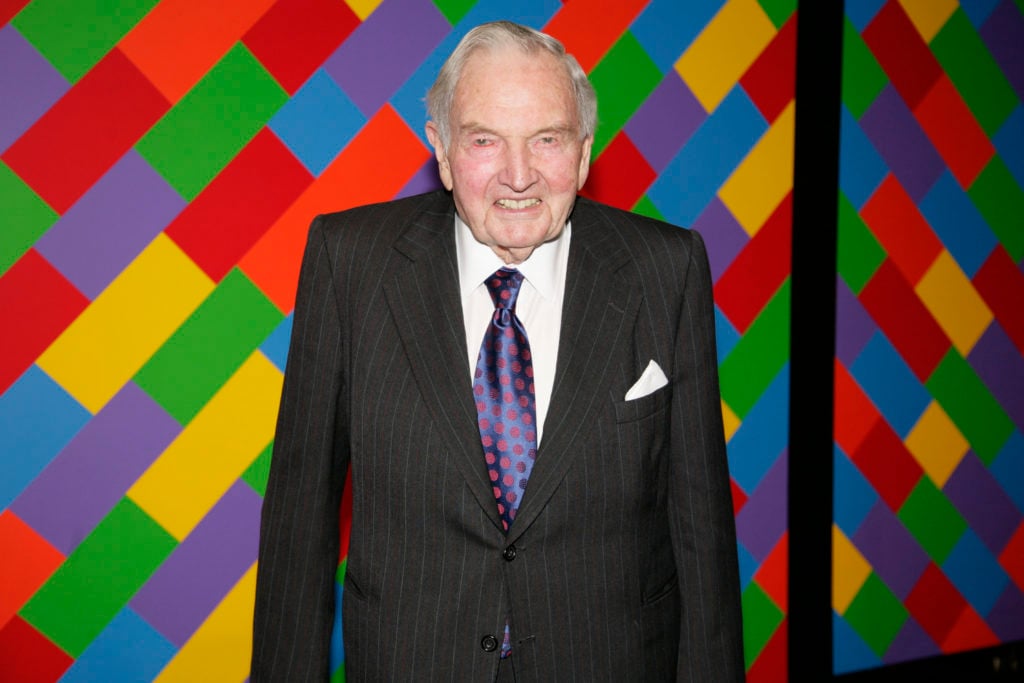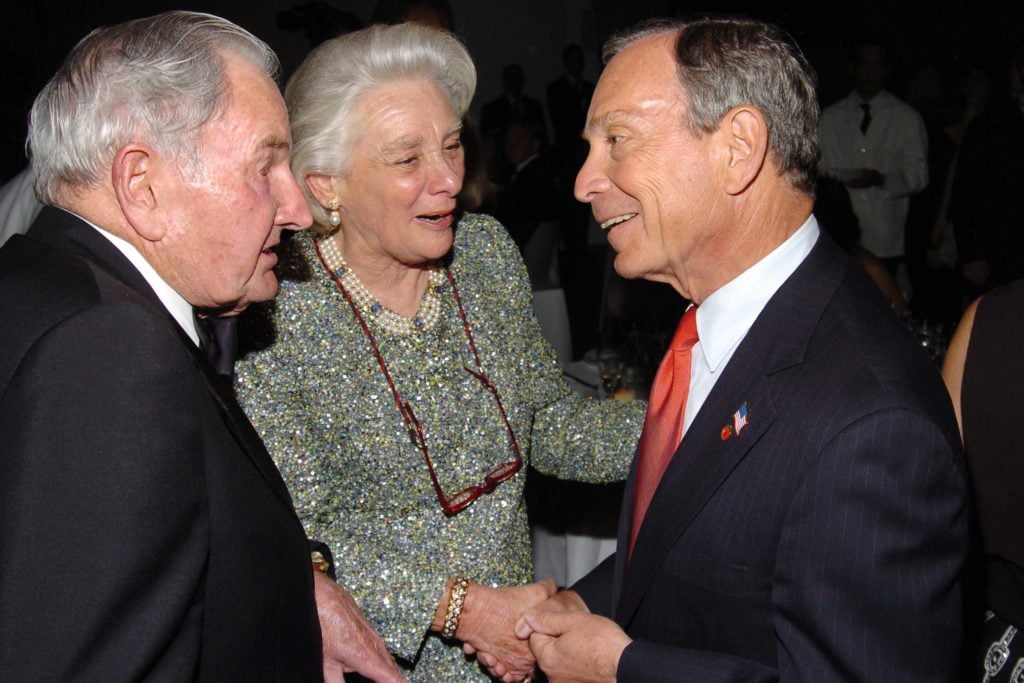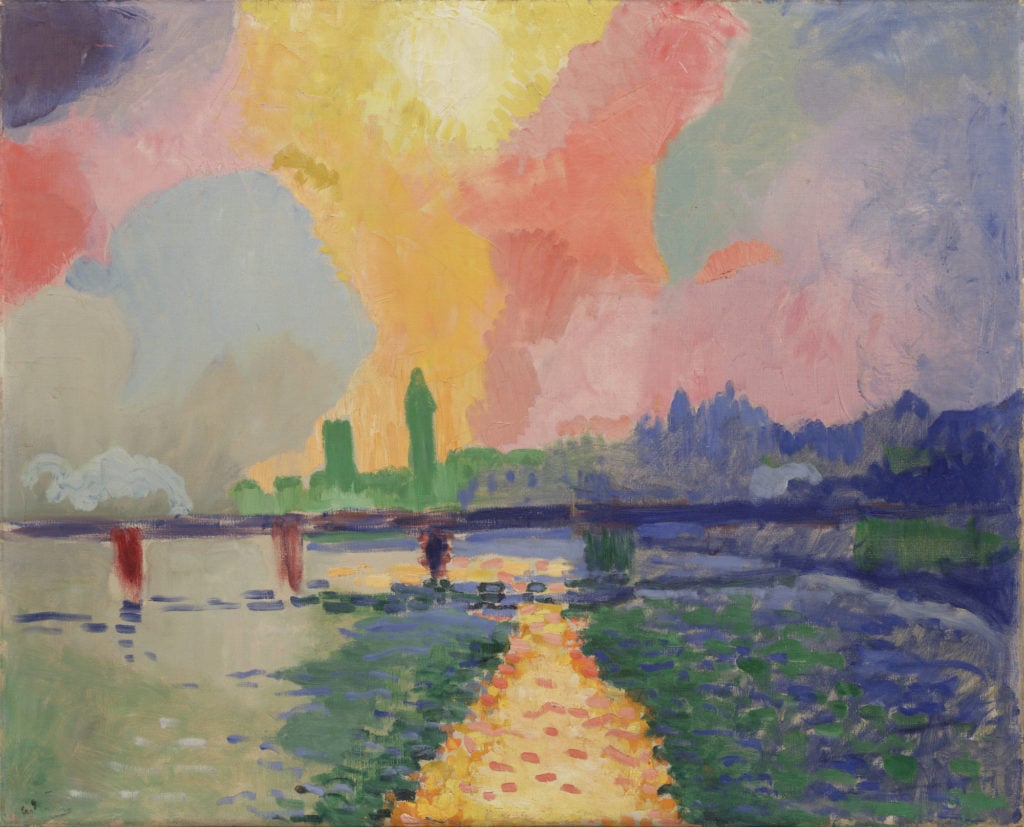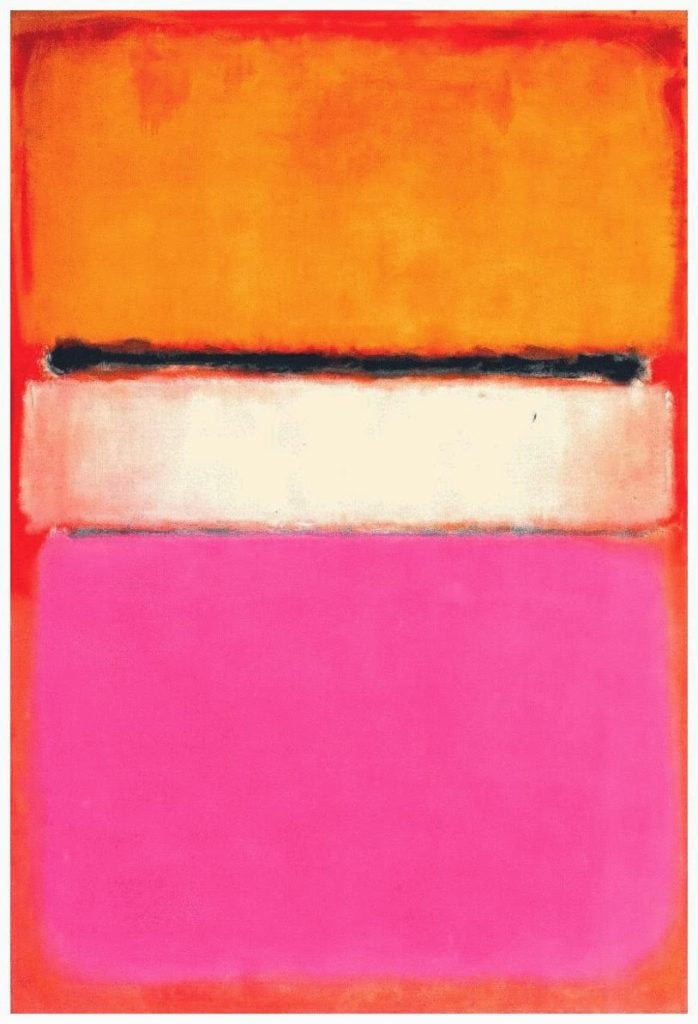People
Billionaire Art Collector David Rockefeller Dead at 101
The last living grandson of John D. Rockefeller was a major arts patron.

The last living grandson of John D. Rockefeller was a major arts patron.

Sarah Cascone

Banking giant, philanthropist and art collector and patron David Rockefeller, the patriarch and oldest living member of the Rockefeller clan, died at age 101 on March 20 at his home in Pacantico Hills, New York. A family spokesperson confirmed his death, the result of congestive heart failure.
A longtime supporter and former chairman of New York’s Museum of Modern Art, which his mother, Abby Aldrich Rockefeller, helped found, Rockefeller was the chairman and chief executive of Chase Manhattan bank. His decision to move the company to Wall Street helped pave the way for the World Trade Center, a project of which he was a major supporter. In 2015, Forbes estimated Rockefeller’s personal fortune at $3 billion.
His grandfather, John D. Rockefeller, made the family fortune through his Standard Oil Company, becoming the country’s first billionaire. In some ways, David Rockefeller represents the end of the family as an American dynasty, as none of the younger members of the clan have matched the national and international prominence of the man who met with an estimated 200 heads of state over his lifetime.

David Rockefeller, Happy Rockefeller, and Mayor Michael Bloomberg at the Museum of Modern Art’s 37th Annual Party in the Garden, celebrating David Rockefeller’s 90th birthday in 2005. Courtesy of Billy Farrell, ©Patrick McMullan.
According to the New York Times, Rockefeller had an extensive art collection of about 15,000 works, including paintings as well as decorative arts objects such as porcelain and furniture. As reported by NBC, it was once valued at $500 million.
Under the mentorship of MoMA founding director Alfred Barr, Rockefeller began collecting with a Pierre Bonnard flower painting, a Henri Matisse still life, and the Pierre Auguste Renoir nude Gabrielle at the Mirror. He also bought a set of water lily paintings by Claude Monet in 1956.
“I was exposed to [art] since I was very small,” Rockefeller told the Art Newspaper in 2003. “Mother’s taste was eclectic and ranged from the ancient world to the contemporary from Europe to the US. She could be amid Asian art in her Buddha Room or studying Toulouse-Lautrec in her gallery, but mostly she focused on Modern art. Father was more interested in the Renaissance and antiquity.”

Pierre Auguste Renoir, Gabrielle at the Mirror (1910).
Rockefeller donated his parent’s collection to New York’s Asia Society. He also founded the JPMorgan Chase Art Collection, which now contains over 30,000 objects, in 1959.
In 1994, MoMA presented the exhibition “Masterpieces from the David and Peggy Rockefeller Collection: Manet to Picasso” featuring 21 works of art given or promised to the museum by Rockefeller. In 2005, he made a $100 million cash gift to the museum, then the largest in its history. (It was matched by billionaire collector and philanthropist David Geffen in 2016.)
Even in recent years, Rockefeller remained a fixture at the museum’s annual Party in the Garden benefit, attending the most recent edition in June just ahead of his 101st birthday. Among its holdings, MoMA has works by Paul Cézanne, Paul Gauguin, Matisse, and Pablo Picasso, all donated by the great collector.
“No individual has contributed more to the commercial and civic life of New York City over a longer period of time than David Rockefeller,” said former New York City Mayor Michael Bloomberg in a statement released upon news of Rockefeller’s passing. “The Museum of Modern Art would not be what it is today without David’s leadership and generosity.”

André Derain, Charing Cross Bridge (1905–06). Courtesy of the Museum of Modern Art. Fractional gift of Mr. and Mrs. David Rockefeller. ©2016 Artists Rights Society (ARS), New York / ADAGP, Paris. Photo: Paige Knight.
Rockefeller again made headlines in 2007 when he sold Mark Rothko’s White Center (Yellow, Pink, and Lavender on Rose), a 1950 canvas he had owned for 47 years, for $72.84 million at Sotheby’s New York. Rockefeller originally paid less than $10,000 for it when he bought it from Eliza Bliss Parkinson, niece of MoMA co-founder Lillie P. Bliss.
The hammer price was a world record for the artist at the time, and it is still the fourth-most expensive Rothko ever sold at auction, according to the artnet Price Database. (The top lot is No. 10, which fetched $81.9 million at Christie’s New York in 2012).
Described by the New York Times as “a particularly sensuous example of Rothko’s abstract work during his most important years,” the painting was notable also because it was one of the few in Rockefeller’s collection that he had brought to auction rather than donating it to a public institution—MoMA passed because it had other similar Rothkos.

Mark Rothko, White Center (Yellow, Pink, and Lavender on Rose).
Courtesy of Sotheby’s New York.
“I’ve given the Modern a great many paintings and am giving them more, but the museum already has so many Rothkos,” Rockefeller told the Times. “I can use the proceeds for other things.”
The Rothko was an important acquisition for Rockefeller, as it was the first piece of Abstract Expressionist art in a collection that previously focused on Impressionist and Post-Impressionist paintings, but later branched out to include the likes of Willem de Kooning and Sam Francis.
When it came to adapting to the changing taste of the times, however, he could only go so far. “I am often startled and even angered and repulsed by the strange directions and provocative content of new forms that seem to pop up every few months. I find many exhibitions baffling: strange videos, distorted and grotesque paintings, graffiti, perverse photography,” Rockefeller admitted to TAN. “When I return to the comforting confines of my home and its Cézannes, Signacs and Derains glowing peaceably around me, I feel relieved.”